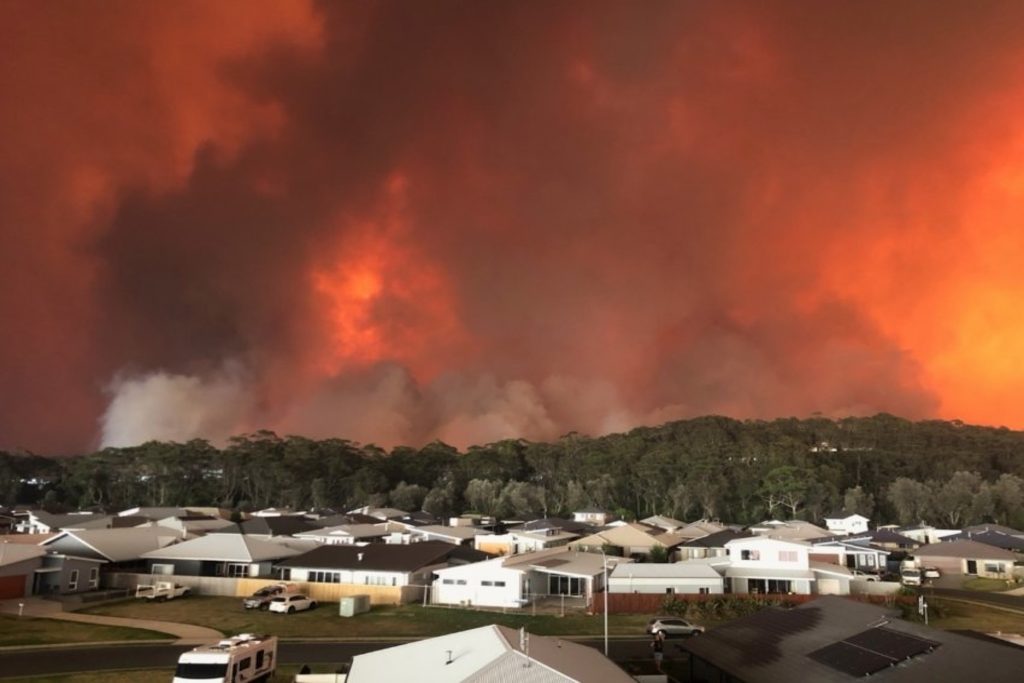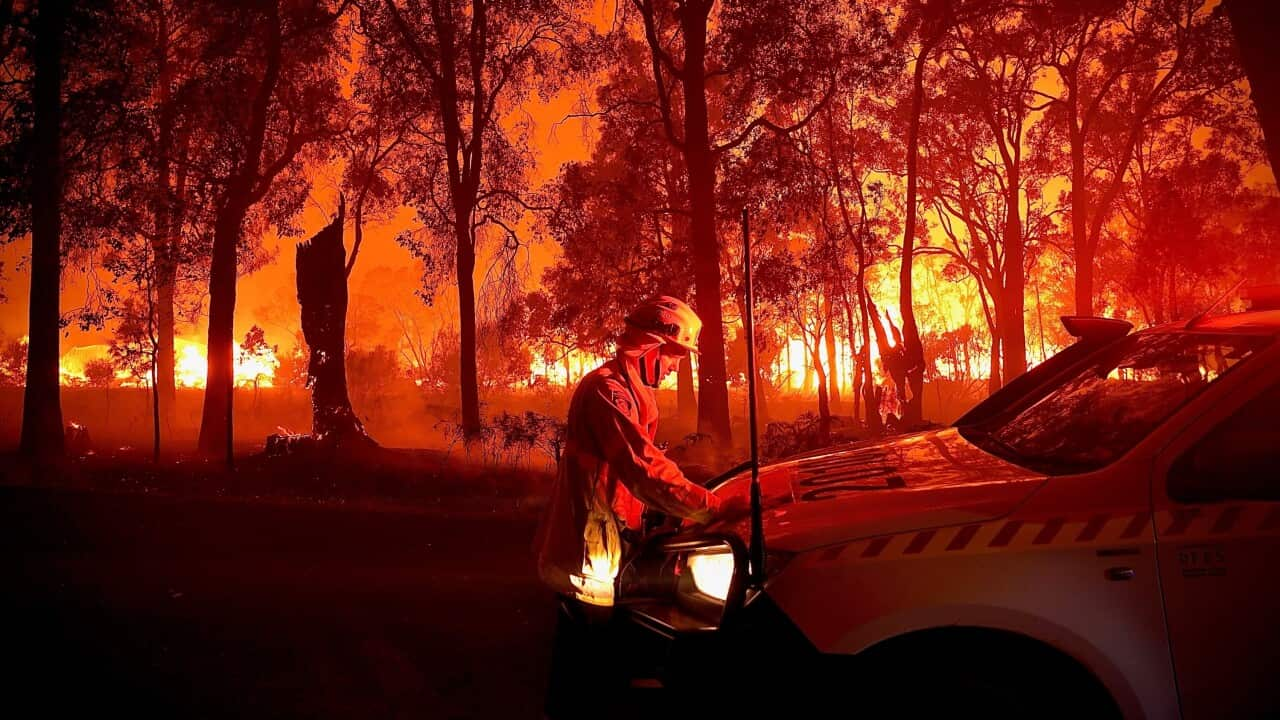Bushfire Risk Assessment Demystified: Exactly How to Translate and Act Upon Your Outcomes
Wiki Article
Crucial Tips for Bushfire Monitoring to Guarantee Fire Defense

Understanding Bushfire Danger Levels
Understanding the differing degrees of bushfire threat is essential for effective planning and prep work in mitigating potential risks to residential properties and lives. Bushfire danger degrees are generally classified based upon variables such as weather conditions, gas schedule, topography, and historical fire actions. By understanding these risk degrees, communities and individuals can proactively implement approaches to decrease susceptability and boost resilience when faced with prospective bushfire occasions.The very first level of bushfire threat is reduced threat, where the chance of a bushfire happening and causing significant harm is marginal. High-risk degrees signify a substantial risk, with problems favorable to quick fire spread and extreme fire actions.
Comprehending these bushfire threat degrees enables stakeholders to tailor their readiness and response actions appropriately, ensuring a aggressive and effective method to bushfire administration.
Creating a Defensible Space
Effective bushfire administration starts with developing a defensible area around homes to boost defense versus possible fire risks. A defensible room is a buffer zone that develops an obstacle between a structure and the bordering combustible plants. This area functions as a crucial line of defense, providing firefighters a risk-free location to operate and assisting to decrease the risk of a fire spreading to the residential or commercial property.When developing a defensible area, it is necessary to take into consideration the layout of the property and the bordering landscape. Clearing up greenery, specifically extremely combustible plants, within a certain span of the building can help protect against the quick spread of fires. Additionally, maintaining a well-irrigated area around the residential or commercial property can even more enhance its defensibility.
Normal upkeep of the defensible space is essential to ensure its performance. This consists of cutting looming branches, getting rid of dead plants, and keeping the area devoid of debris. By investing time and effort right into creating and keeping a defensible room, homeowner can dramatically boost their possibilities of securing their homes and properties throughout a bushfire.
Executing Fire-Resistant Landscaping
When creating landscapes to reduce the danger of bushfires, including fireproof components is important for improving residential property defense and lowering fire hazards. Implementing fire-resistant landscaping entails calculated planning to create a defensible space around structures. Begin by picking fireproof plant species that are less likely to ignite and generate reduced levels of combustible products. Select plants with high dampness material, low oil material, and minimal dead vegetation to reduce the danger of fire spread. In addition, keep sufficient spacing in between plants and maintain them correctly pruned to prevent fire from easily jumping between vegetation.
Creating an Emergency Situation Emptying Plan
Establishing a thorough emergency discharge plan is critical for guaranteeing the website here safety and health of people throughout potential bushfire events (BAL Assessment). An effective discharge strategy ought to outline clear procedures to comply with in the occasion of a bushfire danger, consisting of assigned emptying paths, setting up points, and interaction methodsTo begin creating an emergency situation emptying plan, it is important to evaluate the particular risks and susceptabilities of your place. Recognize numerous evacuation courses that bring about secure locations far from the fire, taking into consideration variables such as terrain, road availability, and prospective dangers. Establish interaction channels to alert locals of an upcoming emptying, using methods such as sirens, text signals, or door-to-door notices.
Consistently evaluation and exercise the evacuation plan with all residents or area participants to make certain everybody comprehends their obligations and duties. Conduct drills to check the efficiency of the plan and make any kind of required modifications. By having a well-prepared evacuation strategy in area, you can improve the chances of a safe and orderly discharge during a bushfire emergency.
Keeping Fire Safety And Security Tools
After establishing a detailed emergency emptying prepare for bushfire occurrences, it is critical to focus on the normal upkeep of fire security equipment to guarantee optimal functionality and readiness. Normal maintenance of fire safety equipment such as fire extinguishers, smoke alarm, fire alarms, and sprinkler systems is important in safeguarding lives and residential or commercial property during a bushfire. When needed., performing regular inspections, screening, and servicing of these gadgets by certified professionals is necessary to guarantee they are in working order.Fire extinguishers ought to be checked routinely for pressure degrees, noticeable damage, and proper functionality. Smoke detectors should have their batteries changed a minimum of yearly and undertake regular monthly testing to guarantee official source they are functional. Emergency alarm and lawn sprinkler systems ought to be inspected occasionally to validate they are attached and functioning correctly. In addition, it is necessary to keep fire safety and security devices obtainable, unhampered, and plainly classified for simple recognition throughout an emergency. By vigilantly preserving fire safety and security tools, individuals can enhance their readiness and action capabilities in the event of a bushfire.
Verdict
To conclude, efficient bushfire administration includes recognizing risk levels, producing defensible spaces, carrying visit here out fireproof landscaping, developing discharge plans, and keeping fire security devices. By following these crucial suggestions, people can ensure better fire security and safety for their homes and areas. It is necessary to prioritize aggressive procedures to reduce the dangers related to bushfires and to be gotten ready for emergencies.By understanding the nuances of bushfire threat levels, developing defensible spaces, implementing fireproof landscape design, developing extensive evacuation plans, and making sure the upkeep of fire safety and security equipment, individuals and neighborhoods can significantly bolster their strength versus the devastations of wildfires - BAL Report. These pointers are not just essential for guarding against instant fire risks yet also for cultivating long-lasting fire protection strategies that can make a considerable difference in the face of escalating bushfire hazards
Risky levels represent a significant danger, with conditions conducive to rapid fire spread and extreme fire actions. Normal upkeep of fire security tools such as fire extinguishers, smoke detectors, fire alarm systems, and sprinkler systems is crucial in securing lives and residential or commercial property throughout a bushfire.In final thought, efficient bushfire administration involves comprehending danger levels, developing defensible spaces, carrying out fireproof landscape design, developing evacuation plans, and maintaining fire security equipment.
Report this wiki page